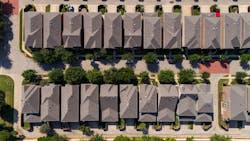Since the early 1900s, U.S. zoning laws have shaped housing development by prioritizing single-family homes, which now make up nearly 70% of all residential housing. While approximately 78% of Americans view homeownership as part of the "American Dream," the emphasis on single-family homes has contributed to the housing shortage by limiting the number of homes that can be built, according to financial services company Bankrate. These homes are also more expensive to maintain, with 40% of homeowners citing higher-than-expected maintenance costs as a regret.
Making zoning changes that would allow more multi-unit properties could increase housing supply and affordability, but progress is slow, and such zoning changes face resistance from residents in some areas. While some cities have passed new zoning regulations with ease, others have faced opposition from residents resistant to change.
The history of single-family home zoning is largely about exclusion — not just excluding, say, industrial manufacturing from residential areas, but excluding certain types of people from these areas too. In fact, in Berkeley, when single-family zoning was created, many developments imposed specific racial covenants to keep out people of color. While this practice is illegal now, many homeowners oppose changes that may create more affordable homes in their area for fear that these cheaper homes — including duplexes, high-rise condos, townhomes and more — could decrease their own property value. Read more
